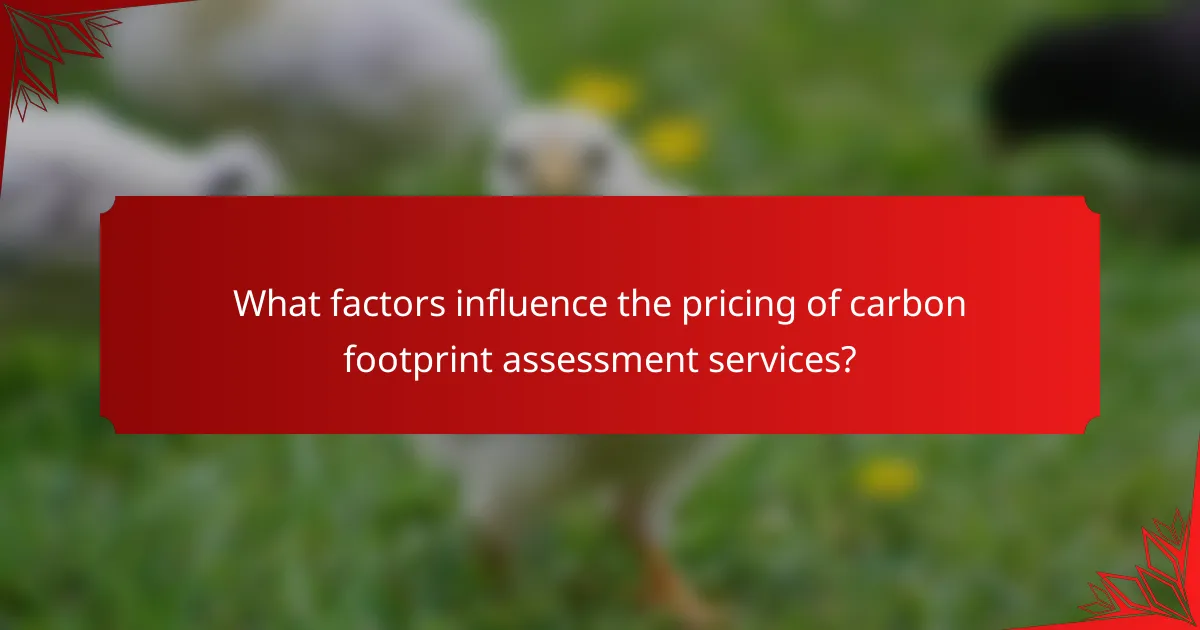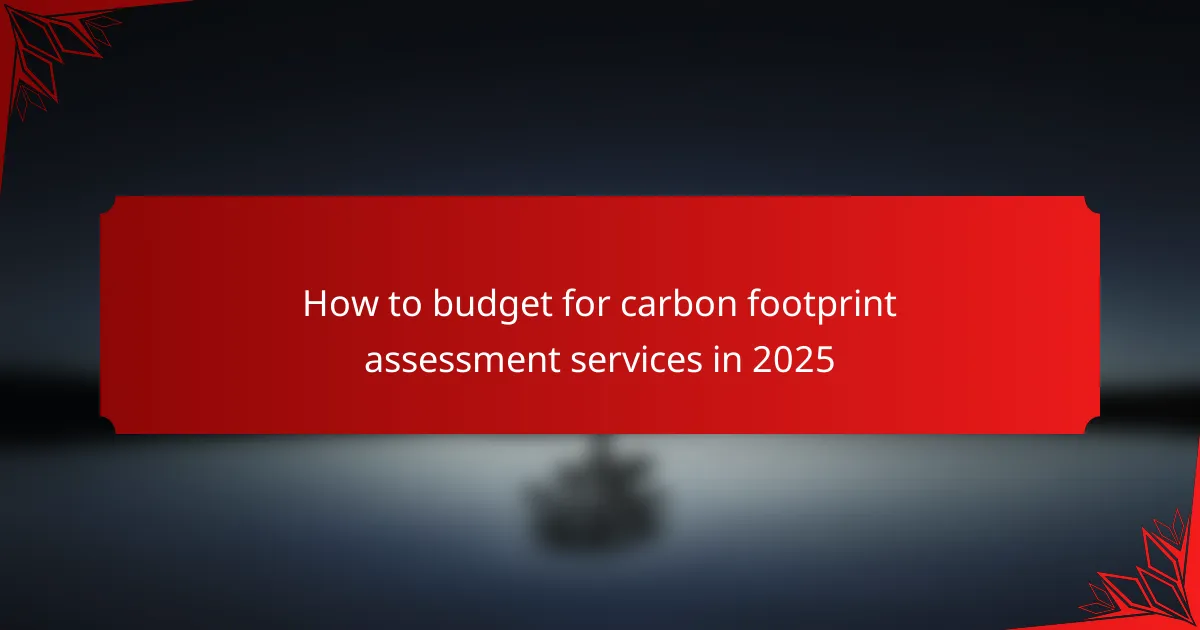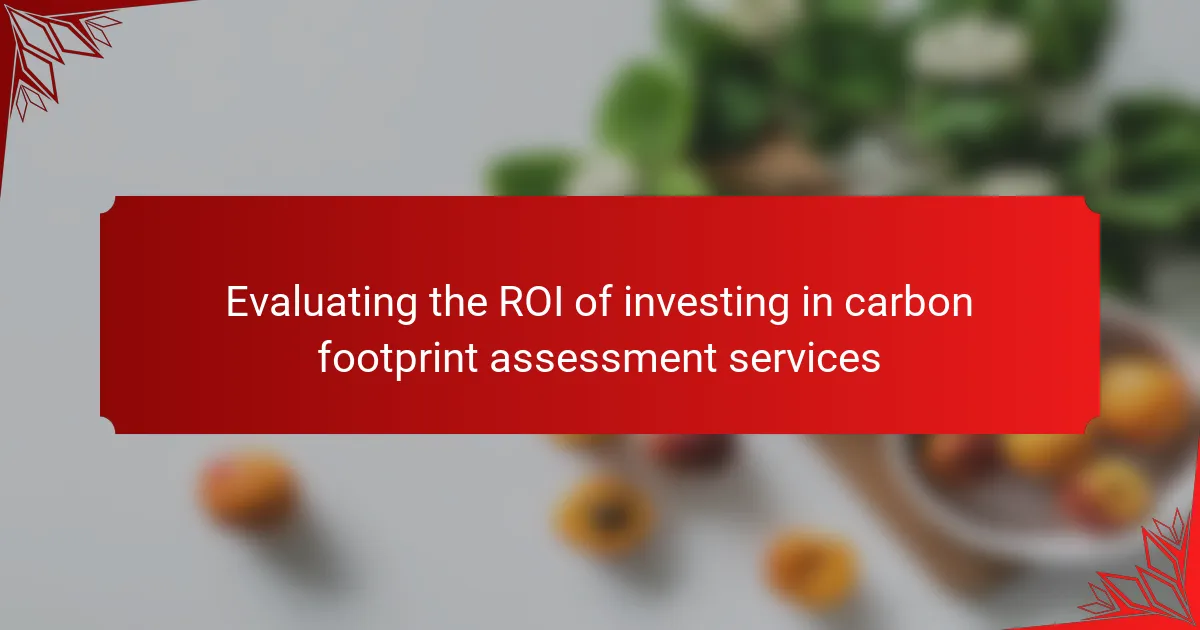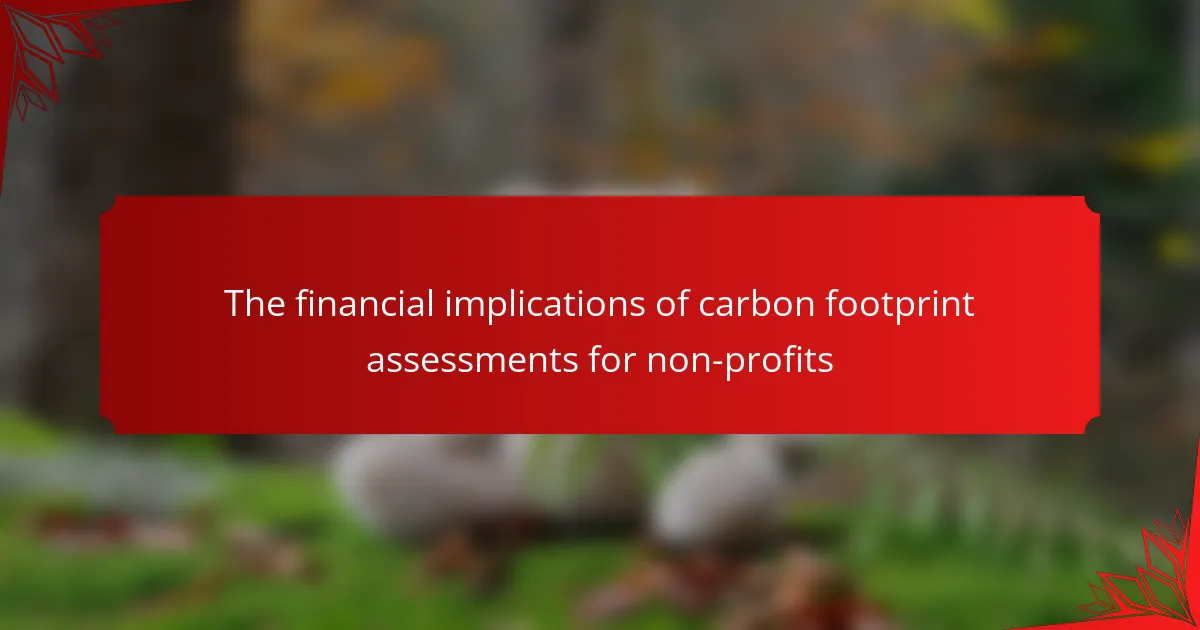As organizations increasingly prioritize sustainability, budgeting for carbon footprint assessment services in 2025 becomes essential. Costs can vary significantly based on factors such as the complexity of the assessment, geographic location, and the reputation of the service provider. By understanding these variables, businesses can effectively allocate resources to obtain accurate insights into their carbon emissions and make informed decisions for future sustainability initiatives.

How much do carbon footprint assessment services cost in major US cities?
Carbon footprint assessment services vary in cost depending on the city, the complexity of the assessment, and the specific services offered. Generally, prices can range from a few hundred to several thousand dollars, reflecting the scope of the project and the expertise required.
Cost range in New York City
In New York City, carbon footprint assessment services typically range from $1,000 to $5,000. Factors influencing the cost include the size of the organization and the depth of the analysis required. Larger companies or those seeking comprehensive assessments may face higher fees.
It’s advisable to obtain quotes from multiple providers to ensure competitive pricing and to clarify what is included in the assessment, such as data collection and reporting.
Cost range in Los Angeles
Los Angeles sees costs for carbon footprint assessments ranging from $800 to $4,500. The variation often depends on the specific industry and the complexity of operations. For instance, tech companies may require more detailed assessments compared to smaller businesses.
Consider engaging local firms familiar with California’s environmental regulations, as they can provide tailored insights that align with state requirements.
Cost range in Chicago
In Chicago, businesses can expect to pay between $900 and $4,000 for carbon footprint assessment services. The pricing can be influenced by the assessment’s scope, such as whether it includes supply chain analysis or just operational emissions.
As with other cities, it’s beneficial to compare services and ensure that the chosen provider has experience relevant to your sector.
Cost range in Houston
Houston’s costs for carbon footprint assessments generally range from $700 to $3,500. The energy sector’s prominence in the area may lead to specialized assessments that can affect pricing. Companies in this sector may require more extensive evaluations due to regulatory scrutiny.
Engaging with firms that understand local energy dynamics can provide valuable insights and potentially lower costs through efficient methodologies.
Cost range in San Francisco
In San Francisco, the cost for carbon footprint assessment services typically falls between $1,200 and $5,500. The higher end of the range often reflects the demand for detailed sustainability reporting and compliance with California’s stringent environmental standards.
When budgeting, consider the potential for additional costs related to follow-up consultations or implementation of recommended changes, as these can significantly impact overall expenses.

What factors influence the pricing of carbon footprint assessment services?
The pricing of carbon footprint assessment services is influenced by several key factors, including the complexity of the service, the reputation of the company providing it, the geographic location of the service, and any industry-specific requirements that may apply. Understanding these factors can help organizations budget effectively for these assessments in 2025.
Service complexity
The complexity of the carbon footprint assessment significantly affects its cost. More comprehensive assessments that include detailed data collection, analysis, and reporting tend to be more expensive than basic evaluations. Organizations should consider whether they need a full lifecycle assessment or a more straightforward approach, as this can lead to cost variations of several thousand dollars.
Additionally, specialized services, such as those that incorporate carbon offset strategies or compliance with specific regulations, can further increase costs. It’s essential to clearly define the scope of the assessment to avoid unexpected expenses.
Company reputation
The reputation of the assessment provider can greatly influence pricing. Well-established firms with a proven track record may charge premium rates due to their expertise and reliability. Conversely, newer or less recognized companies might offer lower prices to attract clients.
When selecting a provider, it’s crucial to balance cost with the quality of service. Researching reviews, case studies, and certifications can help ensure that you choose a reputable company that meets your needs without overspending.
Geographic location
The geographic location of the service provider can impact pricing due to variations in operational costs and market demand. For instance, firms located in urban areas with higher living costs may charge more than those in rural regions. Additionally, local regulations and market conditions can affect pricing structures.
Organizations should consider engaging local providers who understand regional regulations and standards, as they may offer more tailored services at competitive rates. Comparing quotes from multiple locations can also help identify the best value.
Industry-specific requirements
Different industries have unique requirements that can affect the cost of carbon footprint assessments. For example, manufacturing and energy sectors may require more detailed analyses due to their higher emissions profiles, leading to increased costs. In contrast, service-oriented industries might have simpler assessments.
Understanding the specific needs of your industry can help in budgeting accurately. Organizations should consult with experts familiar with their sector to ensure compliance with any relevant standards and to avoid overspending on unnecessary services.

How to choose the right carbon footprint assessment service?
Choosing the right carbon footprint assessment service involves evaluating their offerings, checking client feedback, comparing pricing, and assessing their expertise. This ensures you select a service that meets your specific needs and budget while providing reliable insights into your carbon emissions.
Evaluate service offerings
When evaluating service offerings, consider the scope of assessments provided. Look for services that cover not only direct emissions but also indirect ones, such as supply chain impacts. A comprehensive assessment can provide a clearer picture of your overall carbon footprint.
Additionally, check if the service includes actionable recommendations for reducing emissions. Some providers may offer tailored strategies based on your specific industry, which can enhance the value of the assessment.
Check client testimonials
Client testimonials can provide valuable insights into the effectiveness and reliability of a carbon footprint assessment service. Look for reviews that highlight the quality of the assessments and the responsiveness of the service team.
Consider reaching out to past clients for more detailed feedback. Their experiences can help you gauge whether the service meets expectations and delivers on its promises.
Compare pricing structures
Pricing structures for carbon footprint assessment services can vary widely. Some may charge a flat fee, while others might base their pricing on the size of your organization or the complexity of the assessment.
It’s essential to compare what is included in the price. Ensure that you understand whether follow-up consultations or additional reports are part of the package, as these can significantly affect overall costs.
Assess certification and expertise
Certifications and expertise are crucial indicators of a service’s credibility. Look for providers that are certified by recognized organizations, such as ISO 14064 or the Greenhouse Gas Protocol, which ensure adherence to industry standards.
Additionally, consider the experience of the team conducting the assessments. A service with a proven track record in your specific sector can offer more relevant insights and recommendations, enhancing the overall value of the assessment.

What are the benefits of investing in carbon footprint assessments?
Investing in carbon footprint assessments provides organizations with a clear understanding of their environmental impact, enabling them to make informed decisions. These assessments not only help in compliance with regulations but also enhance brand reputation and identify cost-saving opportunities through improved efficiency.
Regulatory compliance
Adhering to environmental regulations is crucial for businesses, especially as governments worldwide tighten their policies on carbon emissions. Carbon footprint assessments help organizations understand their current emissions and ensure they meet local and international standards. This proactive approach can prevent potential fines and legal issues, making compliance a key benefit of these assessments.
In the European Union, for instance, companies may need to comply with the EU Emissions Trading System (ETS), which requires accurate reporting of emissions. Regular assessments can facilitate this process and ensure that businesses stay within their allocated carbon allowances.
Enhanced brand reputation
Investing in carbon footprint assessments can significantly boost a company’s brand reputation. Consumers are increasingly favoring environmentally responsible businesses, and demonstrating a commitment to sustainability can differentiate a brand in a competitive market. A transparent approach to carbon emissions can build trust and loyalty among customers.
For example, companies that publicly share their carbon reduction goals and progress often attract environmentally conscious consumers, leading to increased sales and positive public relations. This reputation can be a powerful marketing tool in today’s eco-aware marketplace.
Cost savings through efficiency
Carbon footprint assessments can uncover inefficiencies in operations that lead to unnecessary costs. By identifying areas where energy consumption is high or waste is prevalent, businesses can implement strategies to reduce their carbon footprint while saving money. This might include upgrading to energy-efficient equipment or optimizing supply chain logistics.
For instance, companies that conduct regular assessments may find that switching to renewable energy sources can lower energy costs in the long run. Additionally, improvements in resource management can lead to significant savings, often in the range of 10-30% of operational costs.



